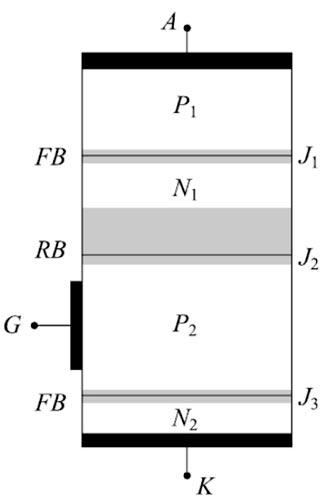Which of the following statement is true about Thyristor?
Right Answer is:
The turn-on time is less than the turn-off time
SOLUTION
Turn on time:- The turn-on time of the SCR is defined as the time from initiation of gate drive to the time when anode current reaches its full value.
The turn-on time of the SCRs is about 1 to 3 microseconds. The turn-on time can be effectively reduced by applying higher values of gate currents. Because of high gate currents, more electron-holes are injected near junction j2. Hence avalanche break-down of J2 takes place fast. Therefore anode current rises fast. Thus effective turn-on time is reduced. To turn on the SCR, the gate pulse is thus sufficient.

Turn off time:- The turn-off time of the SCR is the time required to achieve forward blocking capability after commutation is initiated.
The turn-off time of the SCR varies from 5 to 200 microseconds. The turn-off time of the commutation circuit is called circuit turn-off time (tc). And hence circuit turn-off time must be greater than the turn-off time of the SCR (tc > tq).
Hence the turn-on time is greater than the turn off time in an SCR
SCR Turn-off
We know that SCR can be turned off when its forward current falls below the holding current. The can be done by two methods:
- Natural commutation
- Forced commutation
Natural Commutation: In this type of turn-off, the supply voltage becomes zero or negative, Hence SCR is reverse biased. Therefore it is turned off.
Forced commutation: When the supply voltage is DC, then external commutation components are used to turn off the SCR. The commutation components apply a reverse bias across the SCR temporarily or pass impulse of negative current. Therefore SCR turns off.
Since the commutation transient lasts for a short period, the turn-off time in forced commutation is much smaller than in the Natural commutation
